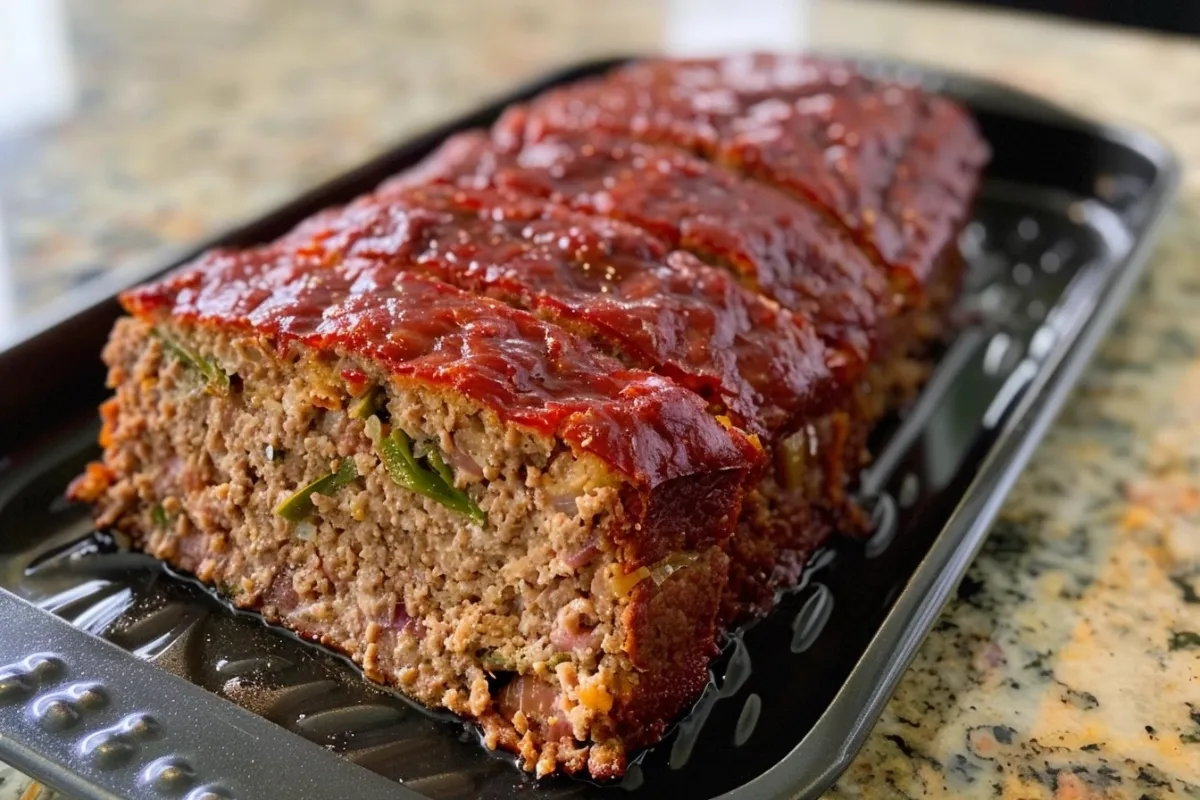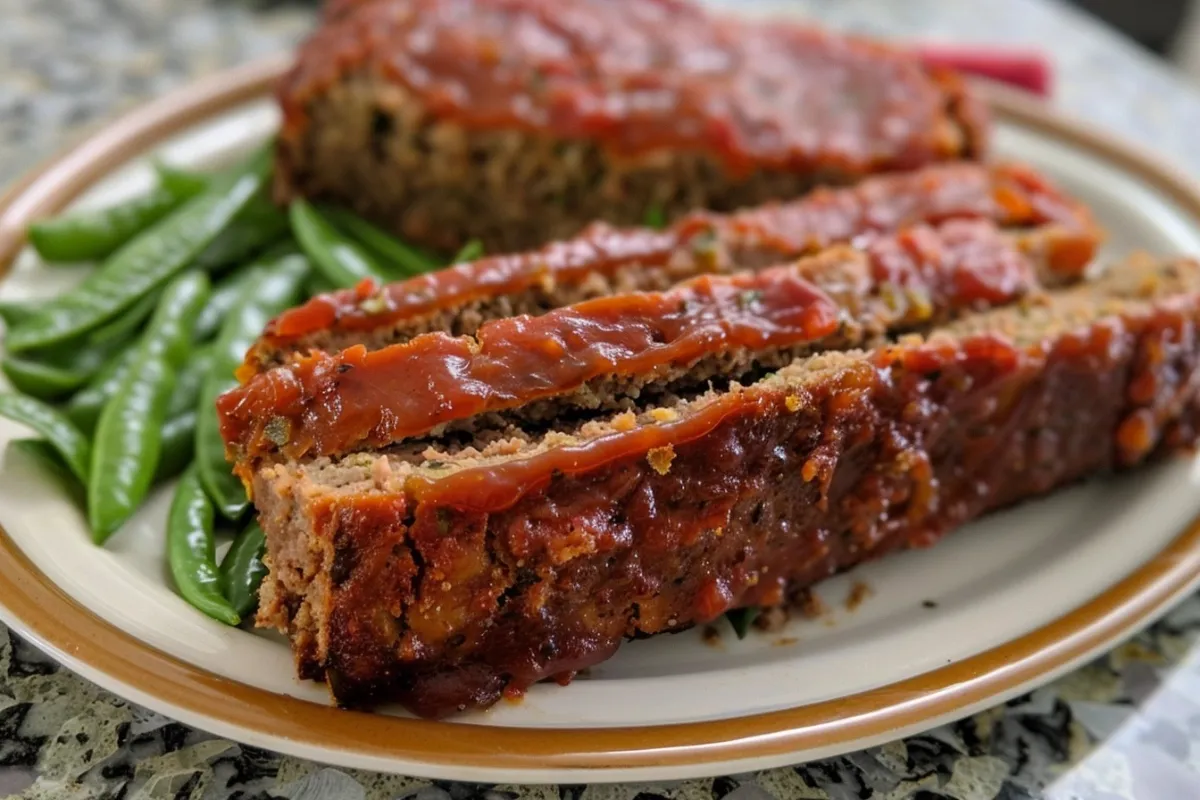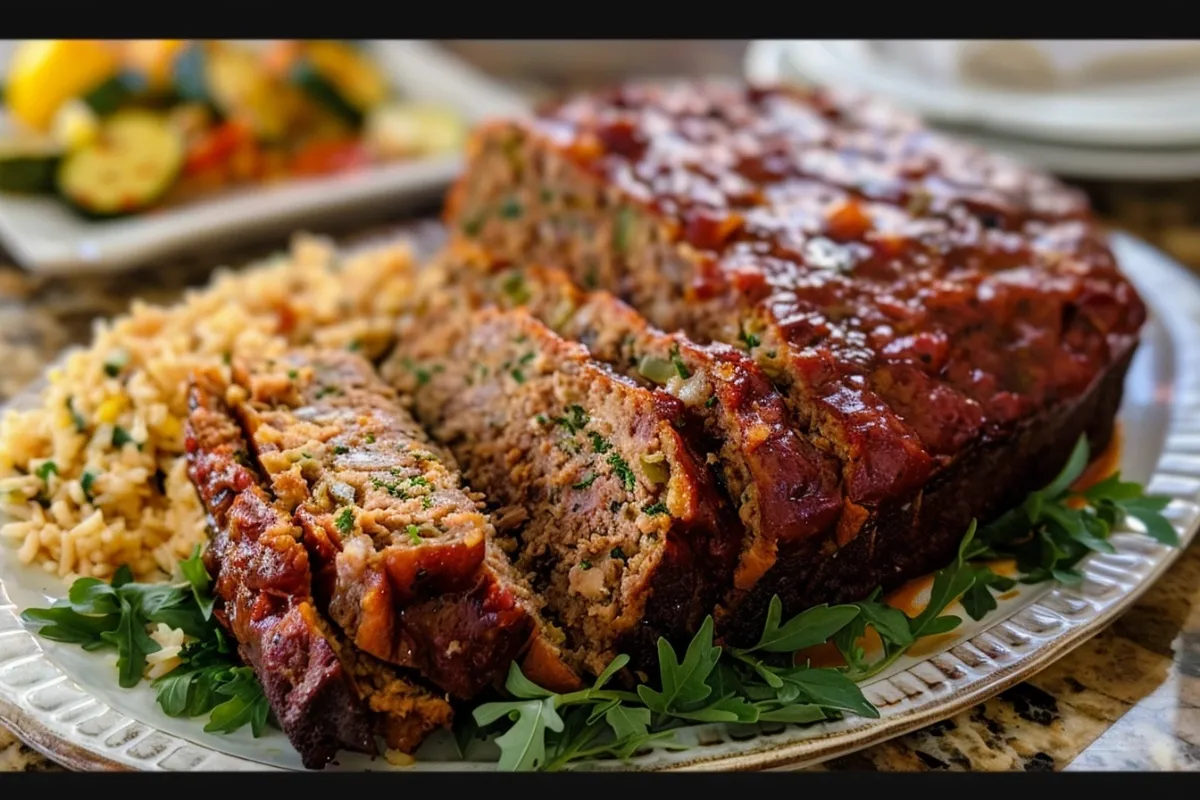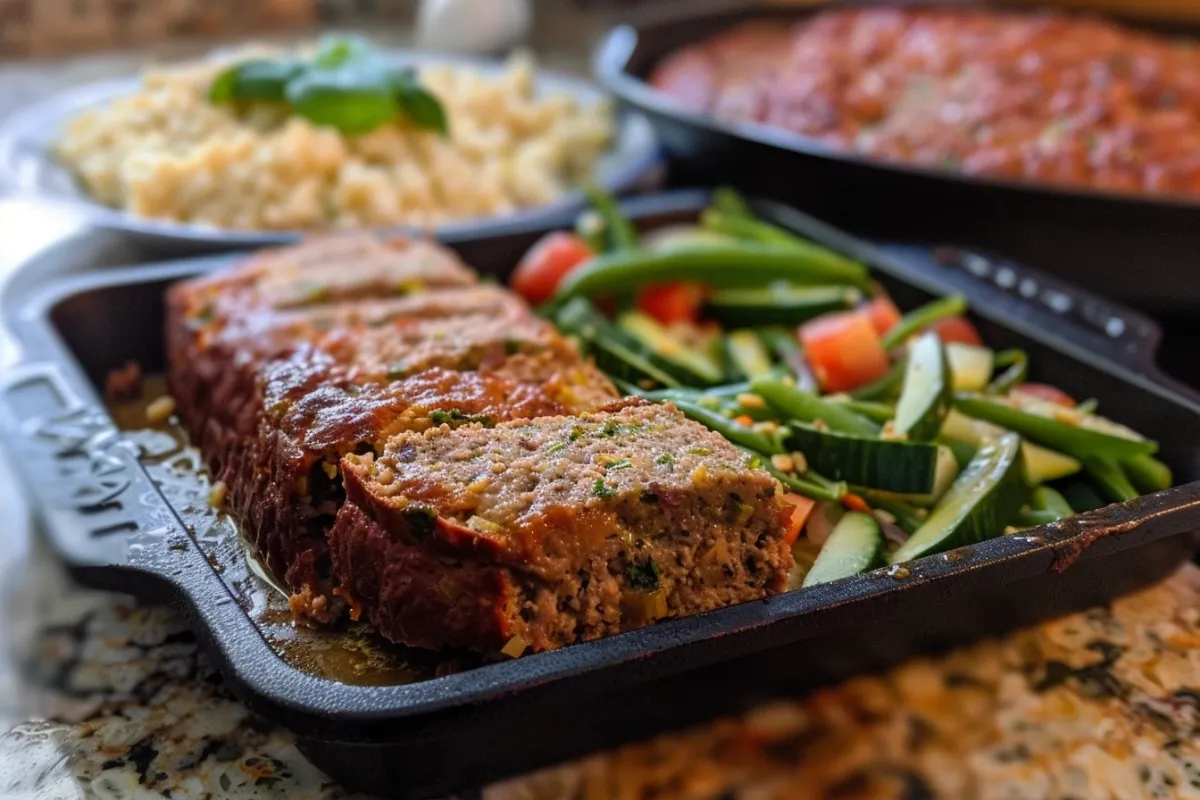This guide will show you how to naturally enhance the taste of your meat loaf with simple, flavorful ingredients. Learn tips to make it incredibly delicious.
Elevating Meat Loaf with Natural Flavors
Meat loaf, a classic comfort food, often needs a flavor boost. However, adding natural flavors can transform a bland dish into a culinary delight. Consequently, this article explores various ways to achieve this. Further, we will discuss using fresh herbs, spices, and vegetables. Moreover, we’ll cover the importance of proper preparation. Therefore, get ready to discover how to make your meat loaf truly exceptional.
The Foundation of Great Flavor: Choosing Your Ingredients
Firstly, selecting high-quality ingredients is essential. Indeed, the type of meat you use significantly impacts the final taste. Naturally, ground beef is a common choice. Yet, adding a mix of ground pork or veal can enhance the flavor. For example, a blend provides richness and depth. Additionally, fresh vegetables, such as onions and garlic, are crucial for building flavor. Furthermore, using fresh herbs and spices will add another layer of complexity.
Meat Selection: A Key to Rich Flavor
Ground beef is generally the base for meat loaf. Nevertheless, leaner cuts may result in a drier loaf. Therefore, consider using an 80/20 blend for optimal moisture and flavor. However, if you prefer a leaner option, be sure to compensate with added moisture, such as a milk or broth. Moreover, incorporating ground pork adds a savory element. Similarly, ground veal contributes a unique richness. Consequently, experimenting with different ratios will allow you to create your perfect flavor profile.
The Importance of Fresh Aromatics
Fresh aromatics, such as onions and garlic, form the aromatic base of most recipes. For example, sautéing these before adding them to the meatloaf enhances their sweetness. Moreover, minced garlic adds a pungent kick. Additionally, finely diced onions contribute to both flavor and texture. In fact, using them raw in the meat loaf mix provides a slightly sharper taste, while sautéing them brings a more mellow flavor.
Herb and Spice Selection: Nature’s Flavor Enhancers
Fresh herbs and dried spices are crucial to naturally boost flavor. Indeed, using a mix adds a wonderful layer of depth. For example, parsley, thyme, and oregano are classic choices. However, basil, rosemary, and marjoram are also excellent. Furthermore, spices like paprika, cumin, and cayenne pepper add warmth and subtle heat. Consequently, consider your personal preferences and desired flavor profile when making selections.
Building Layers of Natural Flavor
Adding natural flavors is not just about individual ingredients. Indeed, it’s about how they interact. For instance, the way you combine these ingredients is very important. Therefore, you must pay attention to each step.
Sautéing for Deeper Flavor
Sautéing onions and garlic before adding them to the mix is a vital step. Consequently, this process brings out their natural sweetness. Furthermore, sautéing also mellows their sharp edges. In fact, adding herbs to the sauté allows their flavors to bloom. For example, thyme or rosemary release their aromas with heat. As a result, this contributes significantly to the overall flavor of the meat loaf.
Binders: Ensuring Moisture and Flavor
Binders such as breadcrumbs and eggs are necessary to hold the meatloaf together. In addition, binders help to trap moisture, preventing it from drying. Naturally, the liquids you use to moisten the breadcrumbs add another layer of flavor. Similarly, milk and broth are common choices. However, tomato juice or even red wine can add a unique twist. Furthermore, the use of eggs contributes to binding. Therefore, they are a vital component of the recipe.
Incorporating Vegetables for Taste and Texture
Vegetables can improve both taste and texture. Indeed, finely diced carrots and celery add a hint of sweetness. Moreover, they contribute to the loaf’s moisture content. Furthermore, adding spinach or mushrooms provides an earthy note. Accordingly, adding shredded zucchini can also introduce moisture, although you should squeeze out the excess liquid before adding it. Consequently, incorporating finely chopped vegetables is a great way to add subtle flavor and improve the meatloaf’s texture.
Mastering the Mixing Process
Mixing ingredients well is crucial for a flavorful meat loaf. However, overmixing the meat can cause the loaf to be dense. Therefore, it’s important to mix it just enough.
Gentle Mixing Techniques
Use a gentle hand when mixing meat loaf ingredients. Indeed, overmixing can result in a tough texture. For example, use your hands to combine ingredients. Alternatively, a large fork or spoon also works well. In addition, avoid kneading the mixture. Also, ensure that all ingredients are evenly distributed.
Resting the Mixture: A Step Often Overlooked
Letting the meatloaf mixture rest for a few minutes before baking is beneficial. Indeed, this allows flavors to meld together. Moreover, the breadcrumbs have time to absorb the liquid. Consequently, the result is a more flavorful and moist loaf. Therefore, this short rest makes a big difference.
Baking Techniques for the Perfect Meat Loaf
How you bake your meat loaf is just as important as your ingredients. However, baking at the correct temperature is necessary. Therefore, you will have a loaf that is cooked through.
Temperature and Baking Time
Baking at the right temperature and for the correct duration is crucial. Indeed, a temperature of 350°F (175°C) is common. Moreover, the baking time can vary based on the size of your loaf. Generally, allow approximately one hour of baking time for one pound of meatloaf. However, you must use a meat thermometer to check doneness. Furthermore, the internal temperature should reach 160°F (71°C). Consequently, the correct temperature ensures the meat is cooked, but still moist.
Adding a Glaze: An Additional Flavor Boost
Glazes not only add a beautiful sheen but also provide an additional layer of flavor. Indeed, ketchup-based glazes are popular. Moreover, you can add a bit of brown sugar or Worcestershire sauce. Furthermore, brushing the glaze on during the last 20 minutes of baking helps it caramelize. Therefore, this results in a richer, more complex flavor.
Variations and Unique Additions
The basic meat loaf recipe is a good starting point. However, you can adapt it to your taste. Indeed, consider adding different cheeses, vegetables, or spices.
Cheese: An Extra Layer of Flavor
Adding cheese is a great way to create another layer of flavor. For example, shredded cheddar or mozzarella are excellent choices. Furthermore, adding some grated Parmesan brings a salty note. Additionally, blue cheese or feta also adds a unique flavor. Consequently, incorporate the cheese just before baking for the best results.
Exploring Different Vegetable Combinations
Don’t be afraid to experiment with different vegetables. Indeed, roasted red peppers or sun-dried tomatoes can add a Mediterranean flair. Moreover, adding chopped bell peppers provides a sweet and slightly bitter flavor. Furthermore, sautéed mushrooms contribute an earthy note. Therefore, you can explore many different combinations to find your favorite.
Spices from Around the World
Experimenting with different spices can bring a global twist. Naturally, a dash of smoked paprika or chili powder adds depth. For example, curry powder or garam masala also provides warm flavors. Consequently, explore different spice combinations to personalize your meat loaf.
Common Mistakes to Avoid
Even with the best recipes, mistakes can happen. Therefore, avoiding these will lead to perfect meatloaf.
Overmixing the Meatloaf
Overmixing leads to a dense and rubbery texture. Indeed, this is because too much handling activates the proteins. Therefore, handle the meat mixture gently. Also, mix only until the ingredients are just combined.
Using Lean Ground Beef
Lean ground beef may lead to a dry meat loaf. For instance, the fat content keeps the loaf moist. Therefore, use a blend that has some fat. However, if you choose to use lean ground beef, add extra liquid.
Underbaking the Meatloaf
Underbaking can be a safety issue, as well as impact flavor and texture. Naturally, a meat thermometer is the best way to ensure that it’s cooked. Furthermore, the internal temperature must reach 160°F (71°C).
Overbaking the Meatloaf
Overbaking leads to a dry and crumbly meat loaf. Indeed, once the internal temperature reaches 160°F, remove it from the oven. Moreover, allowing it to rest before slicing also prevents dryness. Therefore, do not overbake.
The Science of Flavor Enhancement
Understanding how different ingredients interact is important. Indeed, this knowledge helps us boost flavor. Therefore, this section explains the chemistry.
Maillard Reaction and Caramelization
The Maillard reaction is a chemical reaction between amino acids and reducing sugars. For example, this reaction gives browned food its distinctive flavor. Indeed, caramelization is the browning of sugar. Additionally, both reactions play a crucial role in adding flavor. Therefore, they are a necessary part of the cooking process.
The Role of Salt
Salt not only enhances flavor but also helps to draw out moisture. Indeed, it’s essential for seasoning meat loaf properly. Moreover, salt also balances out sweetness and bitterness. Therefore, do not skip the salt.
Fat: A Key Component
Fat is an important component for flavor and moisture. Indeed, it helps to carry flavors throughout the meat loaf. Moreover, it prevents the loaf from drying out. Consequently, the type of fat influences the texture and taste. Therefore, you must ensure an appropriate amount of fat.
Quick Guide to Meat Loaf Ingredients and Their Benefits
Here is a table summarizing the key ingredients and their flavor contributions:
| Ingredient | Flavor Contribution | Benefit |
| Ground Beef | Savory, Rich | Main meat base |
| Ground Pork/Veal | Savory, Rich | Enhances flavor and moisture |
| Onions | Sweet, Savory, Aromatic | Forms flavor base |
| Garlic | Pungent, Aromatic | Adds depth of flavor |
| Fresh Herbs | Fresh, Aromatic, Varied | Adds complexity and freshness |
| Breadcrumbs | Mild, Neutral | Binds ingredients and retains moisture |
| Eggs | Rich, Binds | Binds ingredients and adds richness |
| Milk/Broth | Adds moisture, slight flavor | Keeps the meat loaf moist |
| Vegetables | Varied (Sweet, Earthy) | Adds moisture, flavor, and texture |
| Glaze | Sweet, Tangy, Flavorful | Adds a layer of flavor and caramelization |
Step-by-Step Guide to Building Flavor
| Step | Detail |
| Sauté Aromatics | Sauté chopped onions and garlic in butter or oil until softened, and herbs as well. |
| Combine Wet Ingredients | Mix together breadcrumbs, eggs, and milk/broth. Let sit for a few minutes. |
| Combine with Meat | Gently mix the meat with sautéed aromatics and the breadcrumb mixture. Add salt, pepper, and spices. |
| Add Vegetables | Fold in any diced or shredded vegetables. |
| Mix Gently | Gently combine all ingredients until just mixed. Don’t overmix. |
| Shape the Meat Loaf | Form the mixture into a loaf shape and place in a baking dish. |
| Bake | Bake at 350°F (175°C) until the internal temperature reaches 160°F (71°C). |
| Apply Glaze | During the last 20 minutes, apply glaze and allow it to caramelize. |
| Rest Before Slicing | Let the meat loaf rest for at least 10 minutes before slicing. |
Conclusion: Naturally Delicious Meat Loaf
In conclusion, achieving a flavorful meat loaf is possible by using natural ingredients and proper technique. Indeed, focusing on quality ingredients and gentle preparation makes a big difference. Furthermore, layering flavors through sautéing, using the right binders, and exploring spices enhances your meatloaf. Therefore, do not be afraid to experiment and have fun. Consequently, you’ll be able to create a meat loaf that is both delicious and satisfying. Remember that you can always use natural ingredients to elevate your meals.
Frequently Asked Questions (FAQs)
Why does my meatloaf taste bland?
A bland meatloaf usually lacks proper seasoning and enough aromatic ingredients. Naturally, this happens when there isn’t enough salt, herbs, or spices. For example, use sautéed onions and garlic as a base. Furthermore, ensure you’re using fresh herbs and a good balance of spices. Additionally, using flavorful liquids like broth or tomato juice in your binder can help.
What does adding an extra egg to meatloaf do?
Adding an extra egg to meat loaf enhances the binding of the ingredients. Indeed, it creates a richer texture. Additionally, this helps the meatloaf hold its shape while baking. However, too much egg can make the loaf dense. Therefore, adding just one is usually enough.
How do you add flavor to cooked meat?
There are several ways to add flavor to cooked meat. Naturally, you can use sauces such as gravy or a tomato-based sauce. Additionally, you can add fresh herbs or spices. Furthermore, you can use infused oils. Moreover, searing or grilling the meat adds an additional depth.
What does adding milk to meatloaf do?
Adding milk to meat loaf helps to keep it moist. For example, milk moistens the breadcrumbs used in binding. Additionally, this prevents the meatloaf from becoming dry and crumbly. However, too much milk could make the meatloaf soggy. Therefore, it is necessary to find the right balance.



